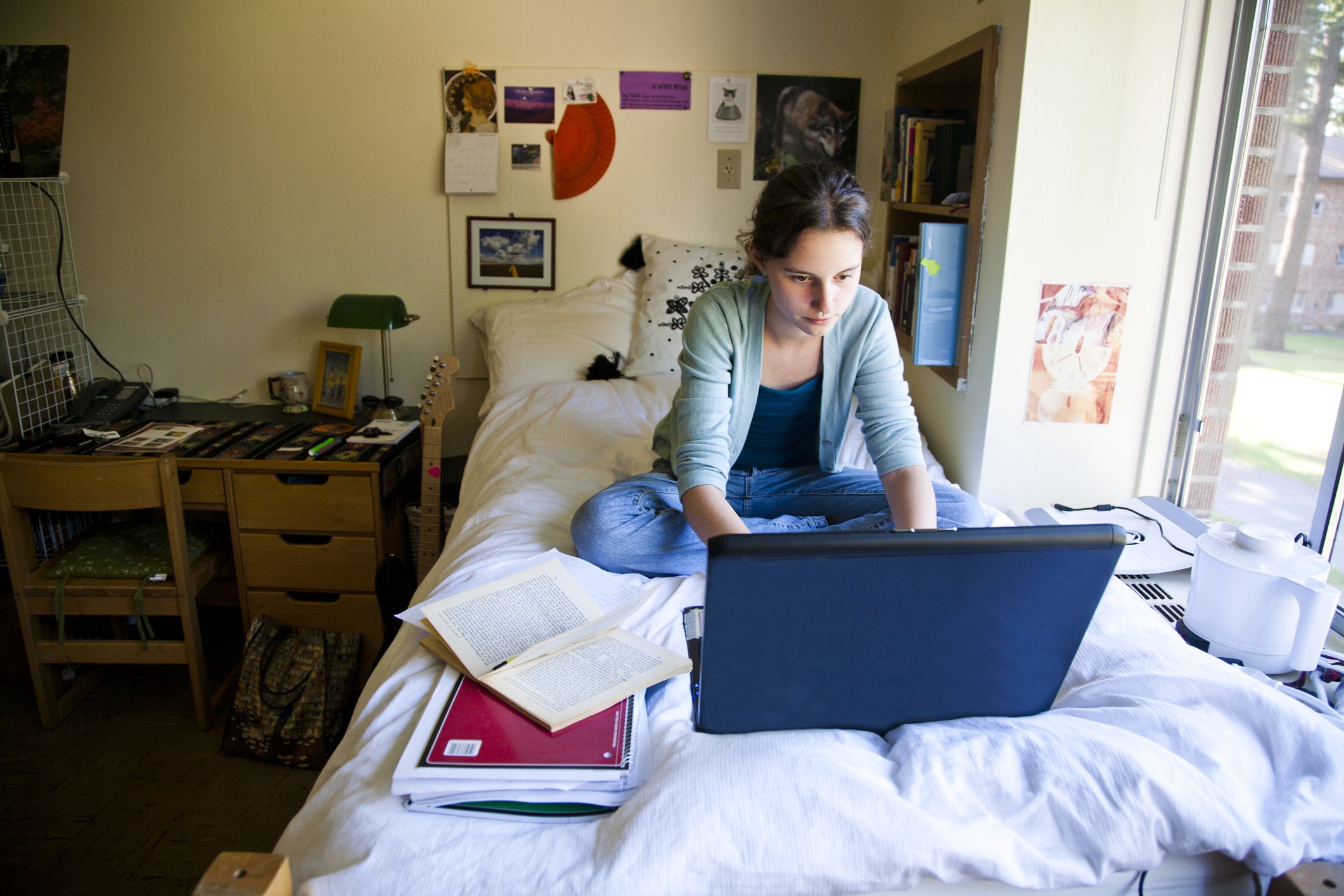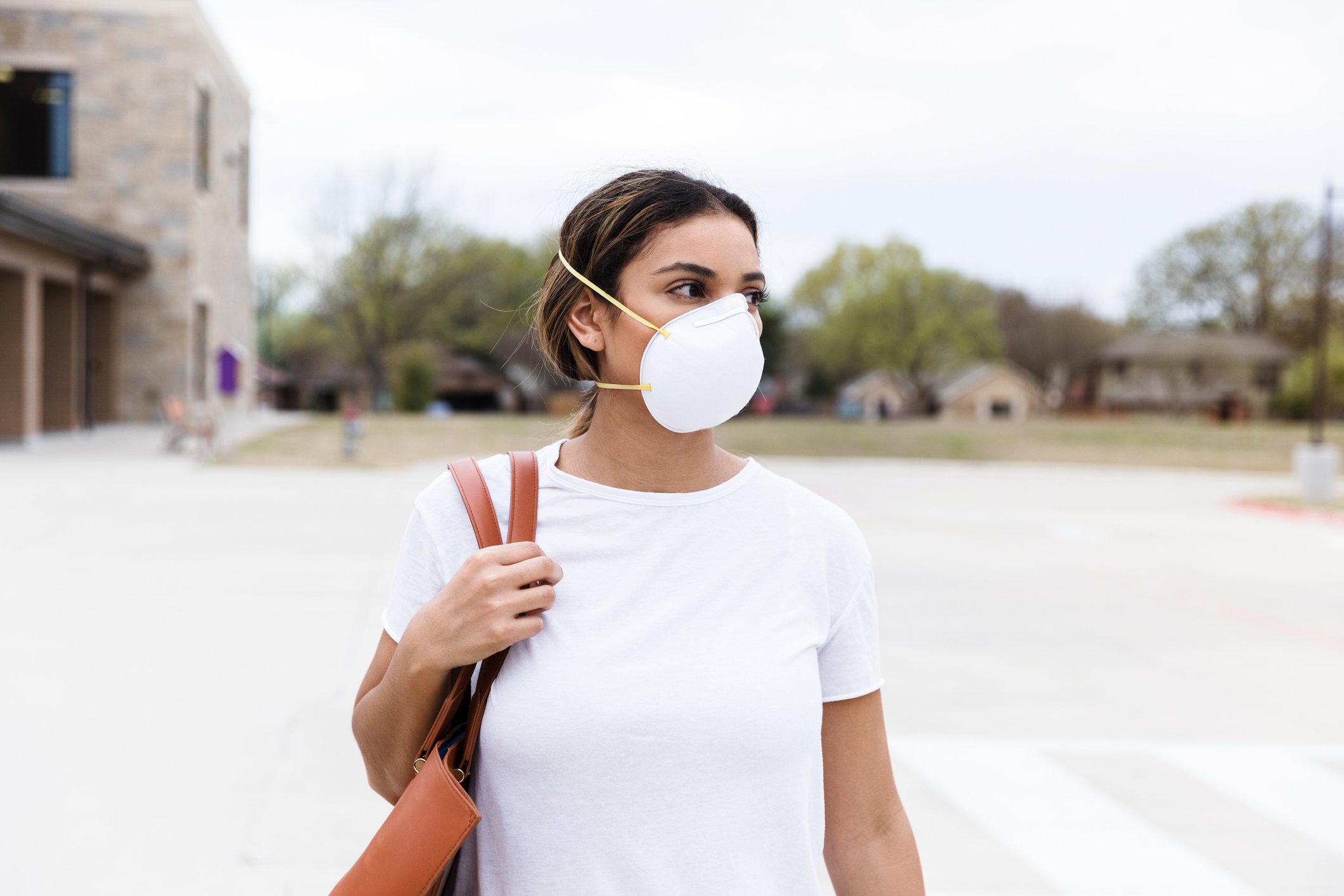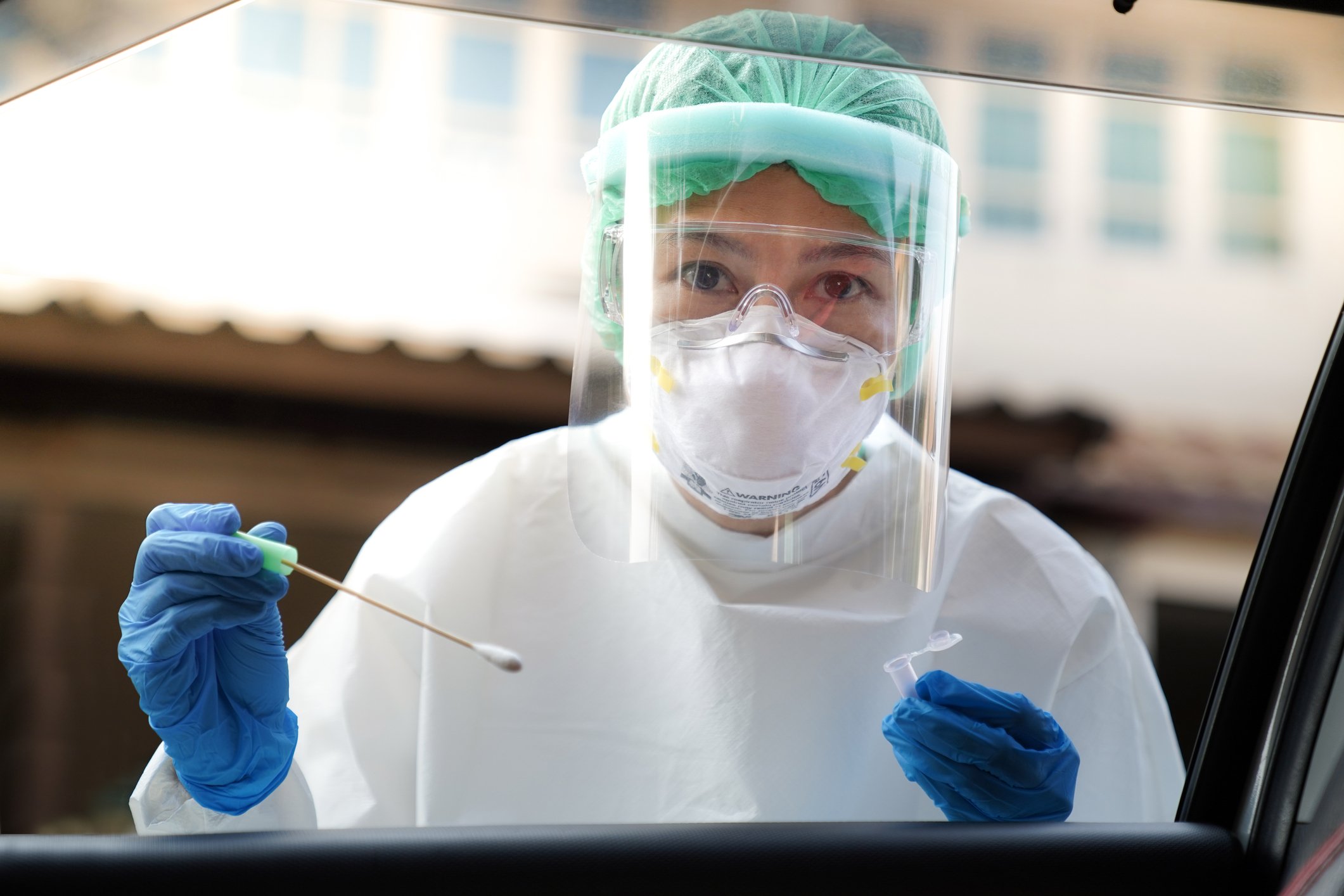Campus life won’t be quite as carefree as it used to be, thanks to coronavirus.
Colleges are gearing up to kick off the fall semester, but because coronavirus is still very much with us, their “welcome back” announcements will be quite a bit different this year. New school policies and student responsibilities to mitigate COVID-19 will inherently change the landscape of what college life looks like. Dorms will likely be more sparse, as checklists for dorm-room essentials have been pared down to absolute essentials for easier cleaning and sanitization. Lecture halls, study lounges, and green spaces will probably be a lot less crowded. And that’s just the beginning, say education experts. While every college will have its own spin on reopening, here’s what students can generally expect.
Move-in day
Traditionally, college move-in day entails a lot of fanfare—curbsides crowded with parents and students, hallways bustling with dormmates, and plenty of staff to help cart boxes to their destinations. This fall, move-in day won’t have much hoopla. Colleges are scheduling specific time slots for students to move in, and there will be a limited amount of help when it comes to unloading and moving everything into the dorms. At Clarion University in Pennsylvania, students will sign up for a two-hour window to move in without any staff assisting them, says Susanne Fenske, PhD, Clarion’s VP of student affairs.
The University of Alabama is also planning unassisted move-in days to promote social distancing and will set limits of two cars per student and two carts for moving stuff in. UA will also offer optional drop-off days for students to get their keys, set up their rooms, and return at a later date, to lessen the usual throngs of people you’d normally encounter on moving day. These face masks with a sense of humor might make move-in day more fun.
Dorm life

Colleges are considering myriad possibilities for dorm living, and some rules are already on the books. Terry W. Knaus, executive director for the Higher Education Consultants Association, says colleges will likely limit the number of students in each room, and some students may get a room of their own. USC, for example, announced housing will be limited to one student per bedroom in residence halls, suites, and apartments. Even in a traditional two-person dorm, Knaus says the furniture and beds will be strategically distanced to be as safe as possible. Cornell housing will be limited to single and double occupancy rooms, and the residential agreement will include new language about commitment to health and safety behaviors.
College career planner Christie Barnes, author of What Every Parent Needs to Know About College Admissions and founder of the website College Need to Know, says other colleges will allow “pods.” These groups of five students will be able to meet without masks on their hallway and eat together in their area of the dorm or together in the cafeteria.
Of course, it’s not just college kids who will experience some big changes. Here are 10 things students of all ages may not see in schools after coronavirus.
Classes
In this new normal, there may be more options for students, whether they want to stay home or be on campus. “In many cases, students will be offered courses that only meet in person and others that only meet online,” Knaus says. “Often, this will be dictated by the enrollment in the class, with large lecture-style classes meeting only online and smaller-sized classes meeting in person.” There’s also the Hybrid model, in which some of the class time will be in-person and some will be online. For even more student flexibility, there’s the HyFlex model; when it’s time for class, a student can choose to attend in person or online each time the class is offered.
So, who’s doing what? Michigan State University is putting approximately half of its courses online and shifting about a quarter of its courses to a hybrid instruction model. Larger in-person classes will be in bigger rooms to allow for social distancing. At Purdue, fall courses will be held on campus, and most courses will be offered in a hybrid in-class/online format. For students who choose not to return to campus or cannot return to campus, online courses will be available.
Curious about online programs? You can take any of these 600 free online courses, thanks to these 200 universities.
The cafeteria

In non-COVID times, dining halls are usually jam-packed. This fall, however, dining halls will primarily serve as a place to pick up “grab-and-go” meals to be eaten in the dorm or elsewhere on campus, Knaus says. The cafeteria at Clarion University will be open with limitations. “All facilities will be adjusted to ensure staff are the only ones serving the students,” Fenske says. “[Students] will be handed their utensils and will have to self-swipe their ID cards. There will be many more additional face shields and grab-and-go options. Furniture will be removed from some of the facilities in order to provide appropriate distancing for students at tables.” Purdue University, which served 7.6 million meals in the 2018–2019 academic year, opted for carry-out meals only with no indoor seating, at least for the beginning of the semester, according to the Protect Purdue Plan.
Just so you know, these are the dirtiest surfaces in places you go to all the time.
Contact tracing
Knaus predicts that contact tracing—testing and identifying who has contracted the virus—will be utilized as much as possible. The challenge lies with the size of the college. “A large public university with 50,000 students will have more of a challenge than a small liberal arts college with 1,500,” says Knaus. Albion College, a small liberal arts college in Michigan, has already enlisted 60 Albion students with hands-on clinical training and HIPAA certifications who are getting certified in contact tracing. The larger University of Southern California has a dedicated USC contact tracing team through USC Student Health. Notifications will be targeted to individuals and groups who may need to get tested, self-isolate, or self-monitor for symptoms.
Campus life

Since social distancing is a key component in staving off the virus, students will likely experience the same safety precautions already observed in their hometowns. For example, there will likely be one-direction hallways and stairways, desks and seats in auditoriums placed six feet apart, and stickers on the floor to remind students to stay the recommended distance apart while standing together in line. At USC, students will be required, in most cases, to make an appointment to use campus services such as the student health center, dining facilities, and library study spaces.
And student clubs and other extracurricular activities will likely continue following an online format, which they switched to in the spring, Barnes says. “The attendance at the clubs and virtual events skyrocketed,” she explains. “Students didn’t have to get up, get dressed, and walk across campus to go to a lecture, club, or event.” She anticipates some colleges won’t hold any events or clubs in person—at least in the fall. After that, they will probably take baby steps to transition to an in-person format later. Colleges might also want to know some specifics before extracurricular activities begin. “The University of Florida will require clubs to present a health and safety code on how they will be run in the fall to maintain university and public health codes,” notes Barnes.
Athletics
“Athletic departments are working feverishly to come up with plans to accommodate not only their athletic teams but also the audiences who attend the games,” Knaus says. “The safety of the studen
t-athletes, along with those who are cheering them on from the bleachers, is of utmost importance to the universities.” Division I colleges are still under discussion, as decisions made by their conference (Big Ten, SEC, Pac-12, etc.) and the NCAA will impact how sports proceed in the fall.
Knaus says some will follow professional sports teams, scheduling games but without spectators. Smaller schools like Cleveland State University will take a phased approach for four fall team sports that already require social distancing: men’s and women’s soccer, volleyball, and cross-country. They will require physical exams and close monitoring. Still, Knaus says other colleges like Morehouse College in Atlanta have canceled their football season to ensure the safety of students and staff. Even if some sporting events are open to spectators, don’t make these coronavirus mistakes if you attend.
COVID testing and prevention

Keeping students and staff healthy is paramount, and the CDC has released guidelines specific to higher education to help colleges achieve this goal. Masks, frequent handwashing, social distancing, testing, and temperature checks will be the norm. COVID-19 testing might even be required before entering some college campuses. At the University of Alabama, Birmingham, for example, students will get a free test. At Purdue, wellness kits with two Purdue-branded face masks, hand sanitizer, disinfecting wipes, and a digital thermometer will be distributed to each student. And even before stepping foot on the USC campus, students, faculty, and staff will be required to complete an online Health, Hygiene and Safety Training module, which covers COVID-19 prevention as well as illness reporting and actions for higher-risk individuals. Be sure your kids look for these signs that off-campus stores aren’t protecting against coronavirus.
Plans for students who test positive for COVID-19
According to Dr. Anthony Fauci, the director of the National Institute of Allergy and Infectious Diseases, it’s not a matter of if students get infected but when. “You have to have the capability when students get infected, which they will, to then get them to a situation where they would be able to be comfortably isolated if in fact they’re just waiting out a relatively mild infection. Or, if they get ill, to have the health care available for them,” Dr. Fauci told the Chronicle of Higher Education.
Depending on the college, students who test positive will have different options. “Some colleges say they are converting a whole dorm for the sick and for contact-traced students who need isolation. These would either have contact care or one visit a day by medical staff,” Barnes says. “Other colleges plan to restrict sick students to their dorm room for two weeks, with food being delivered to their room.” Students who attend Purdue will be required to quarantine if they test positive for COVID-19—regardless of whether they show symptoms or not. And the university says it will set aside approximately 400 beds for isolation and quarantine, with contingency plans in place if more space is needed. On the other hand, notes Barnes, “some colleges only plan to restrict the sick students from attending class or the cafeteria but could wander freely elsewhere.”
For more on this developing situation, see our comprehensive Coronavirus Guide.
